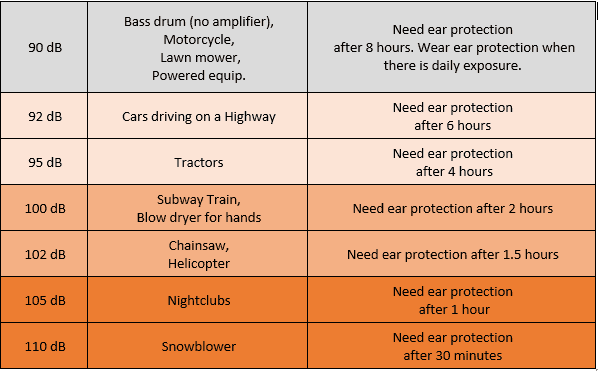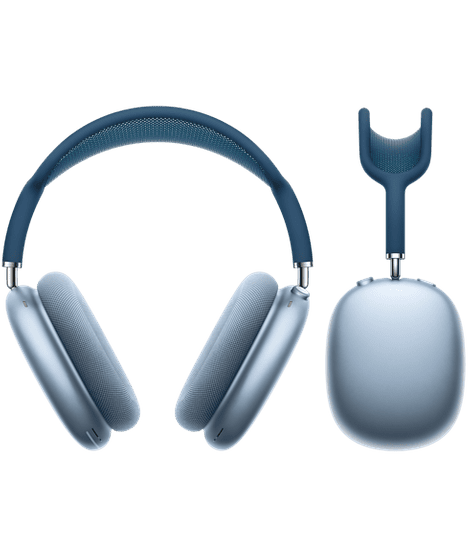Researchers learned that your listening habits affect the safety of earbud and headphone usage.
Most of us assume that what is sold must be safe. Surely the volume on my listening device is safe with and without headphones. However, researchers found that volume is just part of the issue. Have you ever asked yourself, “What safety precautions should I take when I use headphones and earbuds?” Why do I ask?

In 2011, I began work as a certified auditory integration trainer improving a child’s or teen’s tolerance to sounds. While working with clients, my biggest challenge became learning how to communicate the importance of never listening to music using earbuds or headphones. The developer of auditory integration training, Dr. Berard, discovered how to improve clients’ tolerance to sounds. However, after auditory integration training, clients who used earbuds or headphones for recreational listening consistently experienced a return of sound intolerance difficulties. Desiring to help my clients, I decided to investigate.
Basically, researchers throughout the world found hearing loss with earbud and headphone usage while studying the listening habits of children, teens, and young adults. You ask, “What are those habits?” Keep reading. There were some surprising findings. Thankfully, manufacturers like Apple and the gaming industry took up the challenge of helping you protect your hearing.
Past Research
In the past, researchers focused on the potential for temporary and gradual damage to one’s hearing using earbuds and headphones with current technology. As listening devices became more portable, researchers attempted to learn how changes in technology shaped listening habits and behaviors in teens and young adults who wore earbuds and headphones. Studies were completed throughout the world.
Canada
In Canada, researchers studying the negative effects of listening with earbuds or headphones to music on portable players used Canada’s guidelines of “85 decibels. Decibels is the unit of measurement for sound intensity, loudness. Canada’s Center for Occupational Health and Safety (OSHA) strives to prevent hearing loss in the workplace, places of entertainment, and while shopping. Thus, the maximum volume allowed out in the environment is 85 decibels (3, p.4227; 6, p. 1472; 7 p. 2756; 8, p. 646). Ironically, laws did not yet exist limiting the maximum volume of listening devices.
In Canada, researchers found that 3.2 % of participants were at risk for hearing loss (3). Research participants maxed out their volume on their personal listening devices while listening with earbuds and headphones (3). When were unsafe volumes used with headphone and earbud usage?
Why Do You Listen So Loud? Israel
Surprisingly, researchers in Israel found that 25% of participants were at risk when there were high levels of background sound because they turned up their personal listening devices to cover up background sound (4). Despite knowing the risk of loud music, research participants ended up listening to their music at unsafe levels. When asked why research participants shared they turned up the volume to cover up background competing sounds and speech. Consequently, manufacturing laws in Europe mandate devices have a maximum volume output of 100 decibels or less. That is still 15 decibels above safe environmental noise laws! Thankfully, in Europe listening devices for children are mandated to have a lower maximum volume output.
Occupational Health and Safety Decibel Guidelines
Like Canada, the National Institute for Occupational Safety and Health (NIOSH) in the United States recommends ear protection during exposure to sounds above 85 decibels out in the environment. These guidelines protect people in the workplace and in public places of entertainment from “noise-induced” hearing loss. Now, the term “noise-induced” also applies to listening devices with headphones or earbud usage (1,9). If someone else can hear what you are listening to through your headphones or earbuds, your volume is definitely too loud.
Researchers in America found that maximum listening volume on iPhones, iPods, and MP3 players range between 100 decibels and 110 decibels (9). How long do you think it is safe to listen with headphones and earbuds when you max out your volume on your listening device? The answer is three minutes! To put everything in perspective, look at the chart below showing the importance of protecting your hearing when sound reaches 90 decibels out in the environment.

Did you know that cars on a highway emit a noise level of 92 decibels? The National Institute for Occupational Safety and Health recommends ear protection after six hours of exposure to highway noise. Wow! Now, I understand why my ears feel uncomfortable after driving my old van for ten or more hours. Of course, I turned up the radio to cover up the irritating road noise. When I stopped for the night, I sometimes heard sounds in my ears even though it is quiet, tinnitus. Tinnitus is a clue your ears were exposed to loud sounds way too long. When you shop for a vehicle, road noise really does matter.
Learn and Teach Safe Listening Habits
When loud environmental sounds are unsafe, there are steps you can take.
- Turn the radio down or off
- Leave and go to a quieter place
- Use custom-molded attenuated ear protection with the help of an audiologist
- Use affordable Mack’s Ear Plugs
- Give yourself the gift of technologically advanced AirPods Max headphones

Is Tolerance to Loud Sounds Great? Korea
In Korea, researchers had to ask themselves, “Is tolerance to loud sounds great?” Why? Because researchers found that all students, ages 13 to 17, who used their portable listening device for over five years were too tolerant to sound (5). Alarmingly, that means students began using headphones at age seven. Parents, the hearing system develops through age twelve. In my blog, Brain Neuroplasticity, Ruth Litovsky shares that neural plasticity enables the auditory system to adapt and change throughout life’s experiences. However, hearing loss is not an adaptation anyone wishes for their child.
High tolerance to sound is not a strength. When an individual has hearing loss in the cochlear, they need a louder volume to hear. According to researchers in Korea, the greatest danger to increased tolerance of sound is the person’s failure to recognize dangerous listening levels (5). Perhaps this is one of the reasons parents are constantly telling their children to turn down the volume.
An Unexpected Finding!
Unexpectedly, researchers found that hearing loss was caused by more than listening to amplified sounds at a high volume. Surprisingly, when individuals use earbuds or headphones listening at a safe listening volume for prolonged amounts of time in excess of seven hours a week, researchers found hearing loss (1). How often do you, loved ones, or people you know prefer to use earbuds or headphones while listening? Technology below helps you protect your hearing.
Ways to Protect Your Hearing
The Health App
Apple has developed the Health App with the goal of helping YOU protect your hearing. If you have an Apple Watch OS 6 or a newer model), you can sync up your Apple Watch with your iPhone. Then, set the Noise App on Apple Watch to automatically receive notifications on your iPhone when there are unsafe levels of sound in your environment. Thus, you will know when to take precautions to protect your hearing like 1) wear ear protection, 2) leave, and 3) turn the sound down.
In the Health App on your iPhone:
- Tap browse at the bottom right
- Next, tap hearing
- Then, tap noise notifications
- To see more details, tap a notification
AirPods Max
AirPods Max headphones are wireless. Best of all, they automatically eliminate background sounds with the active noise cancellation setting. The AirPods Max creates the best listening experience by using three external microphones that monitor environmental noise and automatically adjust the sound reaching the listener. They also have a transparency mode where it allows environmental noise to reach the listener. The result? Listeners are now using safer listening volumes while wearing headphones.

Receive Headphone Notifications on Apple’s iPhone
How often do you listen to podcasts, movies, and music wearing earbuds? When you connect your headphones or earbuds to an iPhone (14.2), there is a wonderful new feature. When you turn on Headphone Notifications, you receive an alert when your listening volume is unsafe. Best of all, volume is automatically turned down when you have exceeded the amount of time it is safe to listen at your chosen volume while wearing headphones. What a neat way to foster safe listening habits!
In America, you can choose to receive notifications. Interestingly, some countries require manufacturers to sell devices programmed to mandate headphone notifications. To turn on your notifications:
- Go to settings
- Tap on Sounds & Haptics Headphone Safety
- Turn on headphone notifications
- Then, to view details, tap Browse at the bottom right of the Health screen
- Tap hearing and then tap Headphone Notifications
- Turn on the notification
Safe Listening Volumes
Safe listening volumes for adults is half of the output of listening device.
For children, safe listening volumes are about a third of the output of the listening device. However, Dr. Berard warns against the use of headphones until age three (1). Even after age three, Dr. Berard cautions against using headphones for more than thirty minutes at a time (1). According to Dr. Berard, the bone density around the cochlea in each ear does not fully develop until age three. The hearing system continues to develop until age twelve. Wearing headphones disrupts the natural pattern of sound emissions leaving the ear canal. This is why headphones have an open back. Researchers still have much to learn about the effect of headphone and earbud usage on the brain. Help your child create safe listening habits using the strategies below.
What to Do When It Is Too Loud

Motivation to Start New Habits
Do you need additional motivation to change your listening habits? If so, enjoy the resources I provide in my Purposeful Play Blog, How to Teach Safe Listening Habits. Most importantly, parents, teachers, and professionals learn how to observe the directional hearing, an auditory processing skill.
Conclusion
In conclusion, researchers found that chronic use of earbuds or headphones results in an unintended, unsafe listening volume. Consequently, chronic use of today’s technology with earbuds or headphones increases the potential for damage to cochlear hairs, a hearing loss.
If you use earbuds or headphones, the question is not if you will experience hearing loss, but when will you develop hearing loss?
References
- Berard, G. (1993). Hearing Equals Behavior. New Canaan, Connecticut: Keats Publishing.
- Dreossi, R., & Momensohn-Santos, T. (2005). Noise and its interference over students in
a classroom environment: literature review. Pro-Fono Revista de Atualizacao Cientifica,
Barueri (SP), 17(2), 251-258. - Epstein, Ml, Marozeau, J., & Cleveland, S. (2010). Listening habits of iPod users. Journal of Speech, Language, and Hearing Research, 53(6), 1472-1477. doi:10. 1044/1092- 4388(2010/09-0059).
- Faculty of Medicine & Dentistry at the Univ. of Alberta. (2011). Human brain development does not stop at adolescence: Research. University of Alberta Faculty of Medicine & Dentistry,
- Fligor, B., (2009). Personal listening devices and hearing loss: seeking evidence of a long-term problem through a successful short-term investigation. Noise and Health, 11(44),
129-131. - Gu Kim, M., Min Hong, S., Joon Shim, H., Doe Kim, Y., II Cha, C., & Geun, Y. (2009). Hearing
threshold of Korean adolescents associated with the use of personal music players. Yonsei Medical Journal, 50(6), 771-776. - Harrison, R. (2008). Noise-induced hearing loss in children: A ‘less than silent’ environmental
danger. Pediatrics & Child Health, 13(5), 377-382. - Hodgetts, W., Rieger, J., & Szarko, R. (2007). The effects of listening environment and
earphone style on preferred listening levels of normal hearing adults using an mp3 player. Ear & Hearing, 290. - Keith, S., Michaud, D., & Chiu, V. (2008). Evaluating the maximum playback sound levels from portable digital audio players. Acoustical Society of America, 123(6), 4227-4237.



